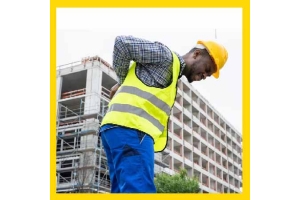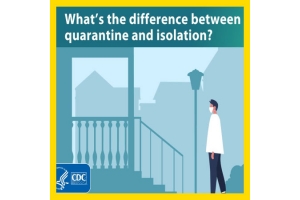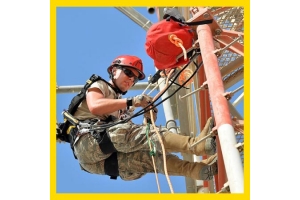Currency
February 05, 2024

5 Ways to Protect Employees from Workplace Violence
The workplace is becoming an increasingly dangerous environment for employees, so it’s more important than ever to have a plan to keep them safe.
Gen Handley
Workplace violence can appear in a number of different—and harmful—ways. According to the Occupational Safety and Health Administration (OSHA), workplace violence is defined as “any act or threat of physical violence, harassment, intimidation or other threatening disruptive behavior that occurs at the work site.”

This can, of course, include physical aggression, verbal threats, verbal abuse and homicide. The National Safety Council reports that violent assaults at work resulted in 20,050 injuries and illnesses requiring days away from work in 2020 and nearly 500 fatalities in 2021.
Workplace violence can hurt and impact a broad swath of the workforce. However, OSHA says people have a greater risk of being affected by workplace violence if they have a job where they:
provide services or care,
exchange money with the public,
work with potentially volatile or unstable people and
work alone or in isolation.
Under these guidelines, this includes people who work in the following industries:
health care,
social work,
mental health and addiction services,
hotel and hospitality,
public water and electrical utilities,
delivery drivers,
law enforcement and
security work/services.
In order to focus on preventing workplace violence, we first need to understand ways employees can be hurt on the job, and the intent behind those actions. According to the National Institute for Occupational Safety and Health (NIOSH), workplace violence can be categorized into four types:
Criminal intent - The most common type of workplace violence, criminal intent is a situation in which “the perpetrator has no legitimate relationship to the business or its employees and is usually committing a crime in conjunction with the violence (e.g., robbery, shoplifting or trespassing).”
Customer/client - In health care, “this type of violence occurs most frequently in emergency and psychiatric treatment settings, waiting rooms and geriatric settings.” People who provide essential health care and social services are most at risk for this type of violence.
Worker-on-worker - This occurs with co-workers who commit violent acts against each other; this is also referred to as lateral or horizontal violence. NIOSH says this type of violence can include “bullying and frequently manifests as verbal and emotional abuse that is unfair, offensive, vindictive and/or humiliating, though it can range all the way to homicide.”
Personal relationship - While not as frequent as the other types, personal relationship violence includes abusive/violent personal circumstances with another person that impacts and hurts an employee’s work environment—and everyone else in it.
To effectively protect employees from these four types of workplace violence, organizations must be persistent and creative. Organizations must employ a strategic selection of safety measures and steps that can help address this occupational hazard—and hopefully eliminate it altogether.
While effective individually, the following five safety measures will have significantly more benefit when combined with another as well as any additional safety precautions that may be required for your industry.
1. Assessment, evaluation and consultation
Workplace violence prevention always begins with a hazard assessment. This is in addition to a work environment evaluation with staff and/or public consultation. Once an exhaustive assessment is performed of the violence-related hazards, safety strategies can then be developed.
Any new safety protocol or steps must be based on occupational dangers and risks identified in a hazard assessment. These steps must be supported by a full evaluation of the work environment, including consultation with any relevant employees, members of the public or stakeholders who can provide valuable occupational health and safety (OHS) input and insight.
2. Violence prevention policy and protocols
Once the specific violence-related safety hazards are documented, a violence prevention policy can be implemented. This type of policy will be the backbone of your violence prevention program and its corresponding safety protocols, which must be accessible to all employees. While flexible, a violence prevention plan should include:
All company positions, jobs or roles that have or could experience violent situations.
All company worksites where violent situations have developed or could develop.
Any safety protocols created to prevent employees from experiencing violent situations. This includes emergency response protocols that instruct both the employee and employer on how to deal with violent situations in the best manner possible.
Instructions for usage of any personal protective equipment (PPE) or safety technology.
The proper procedures for reporting violent incidents and/or assaults at work.
The proper procedures for investigating violent incidents at work.
A violence policy statement that details the employer’s commitment to providing a violence-free work environment for its employees.
3. Safety training
Any violence prevention policy and protocols should be communicated to staff members using whatever internal communications are already in place, such as intranets, staff newsletters and corporate social media platforms. However, the most effective and engaging channel is through safety training.
Researchers found that “as training methods became more engaging (i.e., requiring trainees’ active participation), workers demonstrated greater knowledge acquisition, and reductions were seen in accidents, illnesses and injuries. All methods of training produced meaningful behavioral performance improvements.”
Safety training is particularly effective for vulnerable employees, such as lone workers, who can be working in circumstances where they are more at risk of violence and assault. If they do experience a violent incident while on the job, there isn’t the help or support of a co-worker if they need it.
4. Worker monitoring technology and devices
Workers must perform their jobs in a variety of settings, such as in a large manufacturing plant, off-site or by themselves. In any instance, workers’ well-being needs to be monitored so that if something does happen or they feel threatened and uncomfortable, help can be dispatched immediately.
Worker monitoring devices are a tool that can track biometrics, be used for internal communications and track employees’ location. Devices vary according to worker needs, environmental conditions, use cases and other preferences. Most of these devices are very compact and can be easily carried or worn by the person who’s at risk.
Organizations need to evaluate what solution is appropriate, and whether that includes wearables or hardware, or if software can be added to existing devices. There are many automated safety apps that can be easily downloaded and used on existing devices workers already carry, including their personal cell phones or smart watches.
5. Re-assessment and re-evaluation
The first safety measure on this list was a hazard assessment of the work environment. The final suggested violence-prevention measure is also assessment. This is a repeated and regular assessment of the changing work circumstances and environments (e.g., new staff and protocols or updates to safety legislation and regulations).
Violence hazard assessments need to be performed at least annually, perhaps even monthly, depending on the level of violence risk at your workplace. Following each assessment, the safety department needs to review the findings to determine if any changes are necessary, how best to implement them and continue finding new ways to mitigate or prevent workplace violence.
Violence isn’t only physical
A widely held belief about workplace violence is that the damage is temporary and mostly physical. That is a major misconception. Workplace violence can impact an employee’s mental health for years and can even lead to burnout.
Researchers have found a significant correlation between reduced professional efficacy and non-physical workplace violence, such as verbal aggression, employee burnout, emotional exhaustion and cynicism. Moreover, workplace violence can result in an unhappy work culture where employee turnover is high. The Great Resignation has shown that it can be difficult to retain skilled people. Every time a talented worker leaves an organization, they take their institutional knowledge with them. What’s more, those replacements—and their colleagues—are at greater risk of injury or harm due to safety procedures not being properly followed.
When looking at developing steps to address and prevent workplace violence, always make sure to listen to and consult with employees. These are the people putting themselves into harm’s way just by doing their jobs. They deserve the company’s full attention and every effort possible to keep them safe.
Your people deserve an employer that will plan and prepare for the unthinkable, so that if something does happen, everyone will be ready to deal with it—and in the safest way possible.
Gen Handley is a marketing and growth coordinator for SafetyLine Lone Worker an automated, cloud-based lone worker monitoring service that has helped companies protect remote or isolated workers for more than 20 years. Gen has more than 10 years of freelance writing and marketing experience.
The workplace is becoming an increasingly dangerous environment for employees, so it’s more important than ever to have a plan to keep them safe.
Gen Handley
Workplace violence can appear in a number of different—and harmful—ways. According to the Occupational Safety and Health Administration (OSHA), workplace violence is defined as “any act or threat of physical violence, harassment, intimidation or other threatening disruptive behavior that occurs at the work site.”

This can, of course, include physical aggression, verbal threats, verbal abuse and homicide. The National Safety Council reports that violent assaults at work resulted in 20,050 injuries and illnesses requiring days away from work in 2020 and nearly 500 fatalities in 2021.
Workplace violence can hurt and impact a broad swath of the workforce. However, OSHA says people have a greater risk of being affected by workplace violence if they have a job where they:
provide services or care,
exchange money with the public,
work with potentially volatile or unstable people and
work alone or in isolation.
Under these guidelines, this includes people who work in the following industries:
health care,
social work,
mental health and addiction services,
hotel and hospitality,
public water and electrical utilities,
delivery drivers,
law enforcement and
security work/services.
In order to focus on preventing workplace violence, we first need to understand ways employees can be hurt on the job, and the intent behind those actions. According to the National Institute for Occupational Safety and Health (NIOSH), workplace violence can be categorized into four types:
Criminal intent - The most common type of workplace violence, criminal intent is a situation in which “the perpetrator has no legitimate relationship to the business or its employees and is usually committing a crime in conjunction with the violence (e.g., robbery, shoplifting or trespassing).”
Customer/client - In health care, “this type of violence occurs most frequently in emergency and psychiatric treatment settings, waiting rooms and geriatric settings.” People who provide essential health care and social services are most at risk for this type of violence.
Worker-on-worker - This occurs with co-workers who commit violent acts against each other; this is also referred to as lateral or horizontal violence. NIOSH says this type of violence can include “bullying and frequently manifests as verbal and emotional abuse that is unfair, offensive, vindictive and/or humiliating, though it can range all the way to homicide.”
Personal relationship - While not as frequent as the other types, personal relationship violence includes abusive/violent personal circumstances with another person that impacts and hurts an employee’s work environment—and everyone else in it.
To effectively protect employees from these four types of workplace violence, organizations must be persistent and creative. Organizations must employ a strategic selection of safety measures and steps that can help address this occupational hazard—and hopefully eliminate it altogether.
While effective individually, the following five safety measures will have significantly more benefit when combined with another as well as any additional safety precautions that may be required for your industry.
1. Assessment, evaluation and consultation
Workplace violence prevention always begins with a hazard assessment. This is in addition to a work environment evaluation with staff and/or public consultation. Once an exhaustive assessment is performed of the violence-related hazards, safety strategies can then be developed.
Any new safety protocol or steps must be based on occupational dangers and risks identified in a hazard assessment. These steps must be supported by a full evaluation of the work environment, including consultation with any relevant employees, members of the public or stakeholders who can provide valuable occupational health and safety (OHS) input and insight.
2. Violence prevention policy and protocols
Once the specific violence-related safety hazards are documented, a violence prevention policy can be implemented. This type of policy will be the backbone of your violence prevention program and its corresponding safety protocols, which must be accessible to all employees. While flexible, a violence prevention plan should include:
All company positions, jobs or roles that have or could experience violent situations.
All company worksites where violent situations have developed or could develop.
Any safety protocols created to prevent employees from experiencing violent situations. This includes emergency response protocols that instruct both the employee and employer on how to deal with violent situations in the best manner possible.
Instructions for usage of any personal protective equipment (PPE) or safety technology.
The proper procedures for reporting violent incidents and/or assaults at work.
The proper procedures for investigating violent incidents at work.
A violence policy statement that details the employer’s commitment to providing a violence-free work environment for its employees.
3. Safety training
Any violence prevention policy and protocols should be communicated to staff members using whatever internal communications are already in place, such as intranets, staff newsletters and corporate social media platforms. However, the most effective and engaging channel is through safety training.
Researchers found that “as training methods became more engaging (i.e., requiring trainees’ active participation), workers demonstrated greater knowledge acquisition, and reductions were seen in accidents, illnesses and injuries. All methods of training produced meaningful behavioral performance improvements.”
Safety training is particularly effective for vulnerable employees, such as lone workers, who can be working in circumstances where they are more at risk of violence and assault. If they do experience a violent incident while on the job, there isn’t the help or support of a co-worker if they need it.
4. Worker monitoring technology and devices
Workers must perform their jobs in a variety of settings, such as in a large manufacturing plant, off-site or by themselves. In any instance, workers’ well-being needs to be monitored so that if something does happen or they feel threatened and uncomfortable, help can be dispatched immediately.
Worker monitoring devices are a tool that can track biometrics, be used for internal communications and track employees’ location. Devices vary according to worker needs, environmental conditions, use cases and other preferences. Most of these devices are very compact and can be easily carried or worn by the person who’s at risk.
Organizations need to evaluate what solution is appropriate, and whether that includes wearables or hardware, or if software can be added to existing devices. There are many automated safety apps that can be easily downloaded and used on existing devices workers already carry, including their personal cell phones or smart watches.
5. Re-assessment and re-evaluation
The first safety measure on this list was a hazard assessment of the work environment. The final suggested violence-prevention measure is also assessment. This is a repeated and regular assessment of the changing work circumstances and environments (e.g., new staff and protocols or updates to safety legislation and regulations).
Violence hazard assessments need to be performed at least annually, perhaps even monthly, depending on the level of violence risk at your workplace. Following each assessment, the safety department needs to review the findings to determine if any changes are necessary, how best to implement them and continue finding new ways to mitigate or prevent workplace violence.
Violence isn’t only physical
A widely held belief about workplace violence is that the damage is temporary and mostly physical. That is a major misconception. Workplace violence can impact an employee’s mental health for years and can even lead to burnout.
Researchers have found a significant correlation between reduced professional efficacy and non-physical workplace violence, such as verbal aggression, employee burnout, emotional exhaustion and cynicism. Moreover, workplace violence can result in an unhappy work culture where employee turnover is high. The Great Resignation has shown that it can be difficult to retain skilled people. Every time a talented worker leaves an organization, they take their institutional knowledge with them. What’s more, those replacements—and their colleagues—are at greater risk of injury or harm due to safety procedures not being properly followed.
When looking at developing steps to address and prevent workplace violence, always make sure to listen to and consult with employees. These are the people putting themselves into harm’s way just by doing their jobs. They deserve the company’s full attention and every effort possible to keep them safe.
Your people deserve an employer that will plan and prepare for the unthinkable, so that if something does happen, everyone will be ready to deal with it—and in the safest way possible.
Gen Handley is a marketing and growth coordinator for SafetyLine Lone Worker an automated, cloud-based lone worker monitoring service that has helped companies protect remote or isolated workers for more than 20 years. Gen has more than 10 years of freelance writing and marketing experience.









